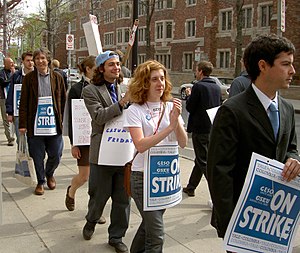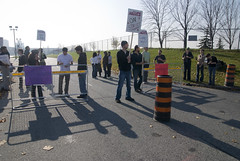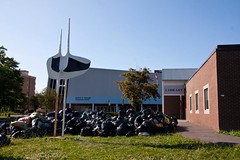Long suspected of providing an artificial cancer risk into the mix, recently the World Health Organization (WHO) has confirmed it – tanning beds are bad news.
 Image via Wikipedia
Image via Wikipedia
New research has prompted WHO to classify tanning beds and ultraviolet radiation as definite carcinogens – they have even categorized them among the top cancer risks to humans, along with smoking.
An article, published online in the medical journal Lancet Oncology, found the risk of skin cancer jumped by 75 per cent when people started using tanning beds before age 30.
Tanning beds give off mostly UVA rays, which may not be as harmful as UVB rays, actually penetrate deeper into the epidermis, meaning, the more you expose yourself to these rays of invisible light, the more likely you will get skin cancer.
I’ve always wondered what the fascination is with heading to a tanning salon, tossing on some funky high-tech looking protective goggles, and lying naked on a giant metallic bed – all in the name to stay golden brown during the winter, or anytime. I’ve met people that use tanning beds on a regular basis throughout the year.
Some go to these places before going away to a sunny vacation destination, to avoid burning once there. Though wouldn’t it make more sense – and be cheaper too – just to slop on some sun screen?
Just how vain do you have to be these days to risk your life?
Years ago, when I was a kid, I’d love soaking up some sun to get a tan. But we’re talking long before we knew the ill affects the sun has on our bodies, and our life spans.
Back then, it wasn’t uncommon for those wanting a quick tan to lather up in Vaseline to increase the affects of the sun’s cooking power. Some would come back looking like lobsters, all burned – but after the burn had gone, a golden tan was all one could see.
 Image via Wikipedia
Image via Wikipedia
Do the same thing these days and you would probably be greeted with strange looks, as most people do whatever they can to prevent the sun’s harmful rays from beating down on them.
But for some reason, we don’t give those strange oddball glances to those telling us they go to tanning salons to get a tan. We assume that because they are everywhere, and allowed to legally sell their product – a tan – that they are safe.
Perhaps that should change.
![Reblog this post [with Zemanta]](http://img.zemanta.com/reblog_b.png?x-id=f1102c73-c9f2-4beb-95d0-841cc164cf43)



![Reblog this post [with Zemanta]](http://img.zemanta.com/reblog_b.png?x-id=5f28b0e2-89e7-464e-8652-6b869533f2a1)





![Reblog this post [with Zemanta]](http://img.zemanta.com/reblog_b.png?x-id=0b058f71-d432-4c7a-b8b8-2fc88726f663)


![Reblog this post [with Zemanta]](http://img.zemanta.com/reblog_b.png?x-id=e32d1bab-7e96-4382-81c0-0781bf5a8d80)



![Reblog this post [with Zemanta]](http://img.zemanta.com/reblog_b.png?x-id=a3ceb73b-3702-4fb3-b5c9-cf995573bf2f)



![Reblog this post [with Zemanta]](http://img.zemanta.com/reblog_b.png?x-id=f2c87407-ab3b-4a04-90c8-e9a0d250eed5)



![Reblog this post [with Zemanta]](http://img.zemanta.com/reblog_b.png?x-id=fc7ce72f-0e51-4059-9c39-43346c311e9d)

![Reblog this post [with Zemanta]](http://img.zemanta.com/reblog_b.png?x-id=7c792ad0-71e5-4305-924b-452247f8c7cb)


![Reblog this post [with Zemanta]](http://img.zemanta.com/reblog_b.png?x-id=c2d572b3-4704-4139-a5cd-43dff5d1c359)


![Reblog this post [with Zemanta]](http://img.zemanta.com/reblog_b.png?x-id=39cda40c-1f55-4a2e-8094-b8bad14c4f38)







